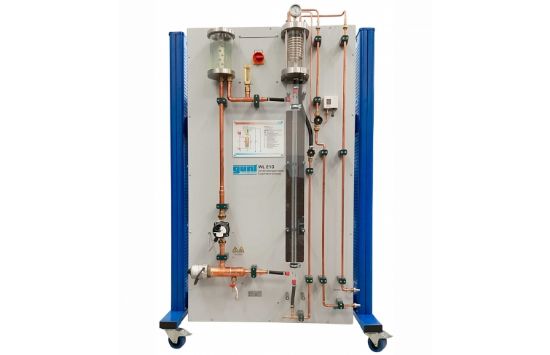During the generation of vapour, the medium that is to evaporate runs through different flow forms dependent on the heat transfer area. The medium flows into a tube evaporator as a fluid and exits the tube evaporator as superheated vapour. In practice, the water vapour generated in big systems is used e.g. for heating plants or machine drives. To design steam generators, it is important to have knowledge of the evaporation process with the boiling crises in order to ensure reliable operation. Boiling crises are caused by a sudden deterioration of the heat transfer, whereby the high heat flux density leads to a dangerous increase in the wall temperature.
The WL 210 experimental unit can be used to examine and visualise the evaporation process in its various flow forms. This is done by heating evaporating liquid, R1233zd, in a tube evaporator made of glass. Compared with water, this liquid has the advantage that its boiling point is at approx. 18°C (1013hPa), whereby the entire evaporation process takes place at much lower temperatures and a lower heating power. The pressure can be varied via the cooling circuit. A water jet pump evacuates the evaporation circuit.

